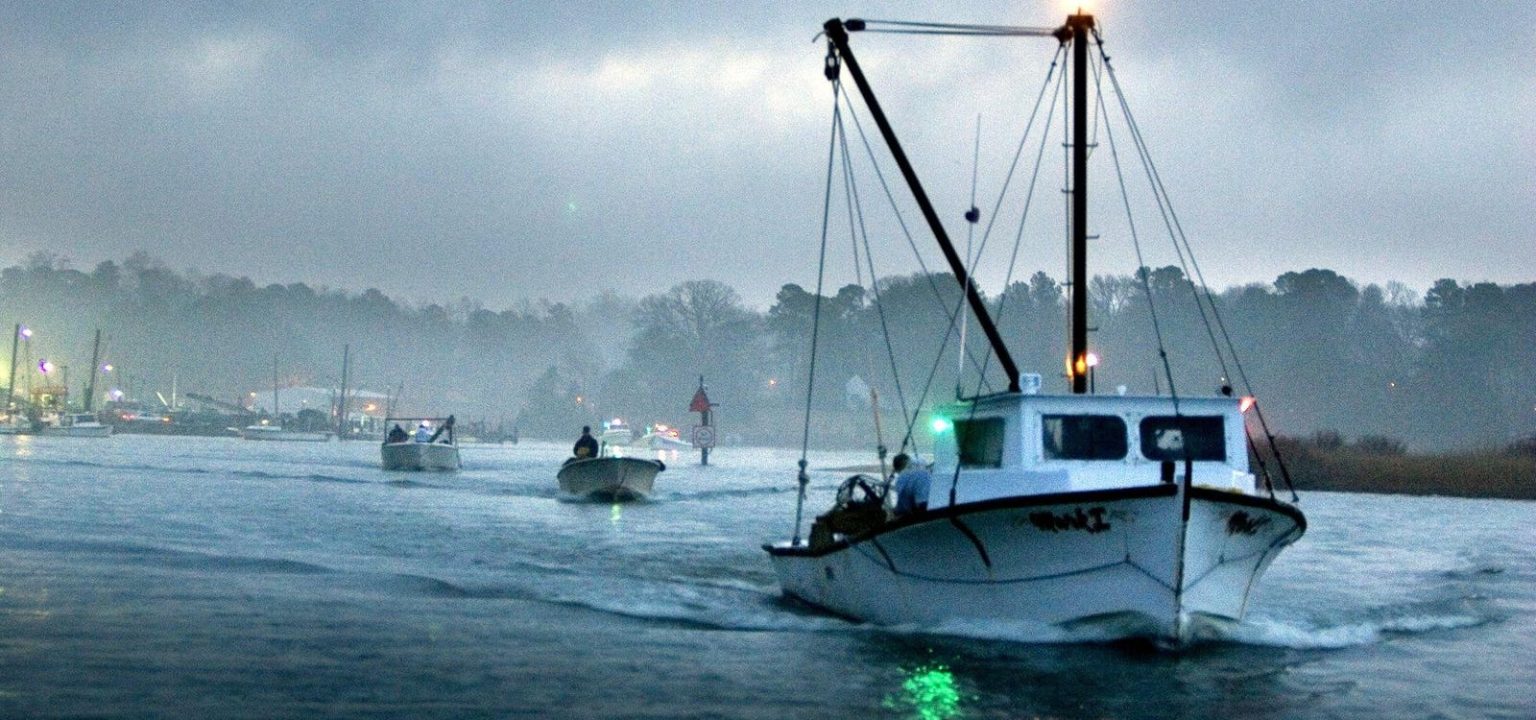As summer’s ocean-based tales of renegade sharks and breaching whales dazzle and captivate, oyster restoration projects around the world are not to be outdone. It’s on these same sunny days that champions of these humble but ecologically critical bivalves promote their planting and proliferation goals of hundreds of thousands, or millions, or billions of oysters. One of the biggest stories is found in the largest estuary in the United States, where over ten years, environmentalists have been working to reverse a historic ecological decline and introduce ten billion new oysters by 2025.
Multiple coalitions of champions of the Chesapeake Bay set their sights on the number as far back as 2014. And now the Chesapeake Oyster Alliance, a coalition assembled by the Chesapeake Bay Foundation (CBF) claims a grand total of at least six billion oysters have been added to the Bay and its tributaries since 2017.
Oysters matter because they are a keystone species, critical to the filtering and oxygenation of the water they live in. When found in reefs, they provide shelter for complex chains of life and can create an environment for diverse aquatic life to grow and thrive.
Poor Little Oyster
As a food, not everyone loves them, but often those who do see them as part of luxurious summer days under Cinzano beachfront umbrellas, lazily consuming oysters, which like summer, are meant to be savored and are gone too fast. Fresh oysters and crisp wines and cocktails are considered iconic vacation fare, but those particular oysters almost always are from specifically engineered commercial aquaculture operations.
Lots of people don’t know that in reality, summer is the least desirable time to eat oysters that are growing in the wild. In nature during these months, they are engaged in the tough work of reproducing and are devoid of the fleshy volume and flavors that oysters ultimately do acquire as autumn begins and these small hard-working creatures have settled in to rest and restore. It is an axiom of connoisseurs that, in cool climates, wild oysters should only be consumed in “r” months, meaning September through April. In the warmer Middle Atlantic region, April might already be a bit late for wild oysters.
The ”Patricia Campbell”
However, summer is an advantageous period to take stock of oyster populations and aquatic environments and to position baby oysters for growth and reef-building. That’s how I caught up with the “Patricia Campbell,” a 60-foot by 19-foot boat commissioned by the Chesapeake Bay Foundation through the largesse of the Campbell Foundation and CBF trustee, Keith Campbell. “Spiffy” is not a formal boat term, but you would call it that yourself if you could see the “Patricia Campbell,” named after Campbell’s wife. Completed in 2002 by Midship Marine in Harvey, Louisiana, the all-welded aluminum construction vessel is equipped with contemporary technology, while the rudimentary design is based on the oyster farming boats of Virginia. The payload of this boat, though, goes in the opposite direction of those farming boats, as the crew delivers oyster shells and other materials back to the water, to develop and augment oyster reefs.
Captain Karl Willey, program manager for the Chesapeake Bay Foundation’s Maryland oyster restoration program, has been engaged in the cause of restoring the Bay for more than two decades. Willey runs about a dozen trips a year on this vessel. “The Bay is doing incrementally better. Every year it gets a lot better. It’s like the stock market,” he says. “It goes up and down due to environmental pressures but everyone’s doing the best they can to get the Bay back in shape. We put millions of oysters in every year to help save the Bay.”
Reef Balls
About 25% of the viable reefs in the Chesapeake Bay are sanctuaries where harvesting is prohibited. Over the summer and into late fall, in strategic tributary locations, he and his crew hoist into tributaries giant reef balls that have been set in a tank with “baby” oysters or “spat.” In late July, Willey’s team deployed into the St. Mary’s River in southern Maryland 150 reef balls set with juvenile oysters. It’s part of a plan to add a total of 600 reef balls to the river. The St Mary’s is one of eleven Bay tributaries targeted for full oyster habitat restoration by 2025. You might mistake one of these concrete balls for a meteorite. Designed and created by the CBF and the Coastal Conservation Association, they are perforated with holes which allow tiny juvenile oysters to attach, access foods from the water, and grow, while sitting high enough from the water’s muddy bottom to avoid getting smothered in silt.
CBF Maryland Coastal Resource Scientist Julie Luecke says the design with its hard casing is also meant to bolster shorelines against erosion in a period of climate change and the intense weather that accompanies it. “The reef balls that we are putting in allow oyster reefs to persist past some of the challenges of climate change, making sure the reefs are sustainable. We often place them on shorelines to mitigate sea level rise and prevent erosion,” Luecke explains. “Oyster reefs grow over time. Those oysters that exist on these reef balls ultimately will be home to new oysters, either reproduced right there or coming down the river from other reefs, and that allows the reefs to grow over time. We are hoping that will be consistent with sea level rise, so that we’ll have this physical structure that will be growing as sea levels are rising.”
Restoration Goals
The Chesapeake Bay is a 64,000-square-mile watershed that extends across parts of Delaware, Maryland, New York, Pennsylvania, Virginia, West Virginia, and the District of Columbia. In 2014, these states and the federal government partnered in a multi-pronged decade-long plan, in which oysters play a significant role. Stephanie Westby of the National Oceanic and Atmospheric Administration (NOAA) says that the targets of the ten-year 2014 Chesapeake Bay restoration program are now well within reach by 2025. “We are on track to build more than 1800 acres of oyster reefs. This is considered the largest oyster restoration project globally,” says Westby. “I am beyond thrilled with the amount of high quality oyster habitat that we have been collectively able to bring to life through the auspices of the 2014 agreement.”
The effort to restore the once oyster-abundant Bay is massive and involves players from every sector. “Nobody can go this alone it absolutely takes everyone working together – states, federal agencies, local communities, academics, nonprofit organizations. We’ve also hired watermen – who are rich in local knowledge – and their vessels for oyster reef seeding and monitoring,” says Westby.
Ultimately the big players agree that the outcomes of improved water quality and more robust fish habitat are worth the year-round human planning and life-long investment of the eternal oyster.
Read the full article here





